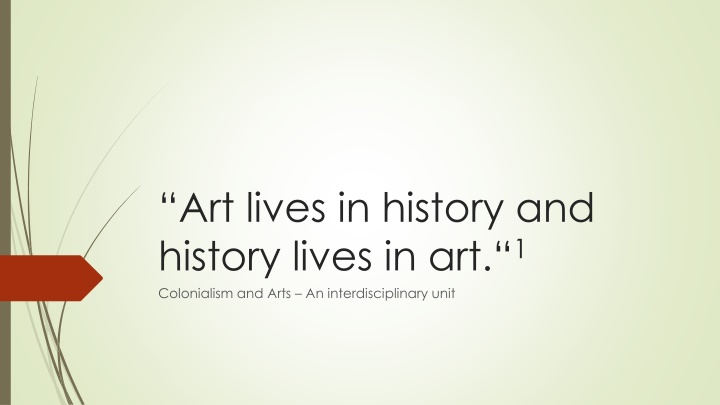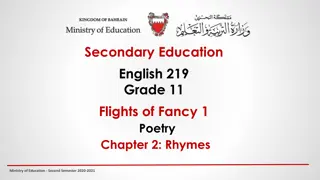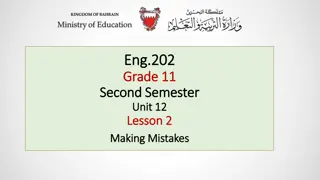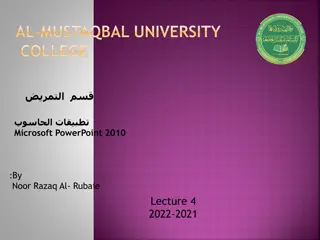
Exploring Colonialism and Arts: An Interdisciplinary Unit
Dive into the intertwining of art and history through a lesson on reclaiming narratives in poetry and the battle for looted Benin Bronzes, providing insightful analysis and discussions on cultural heritage.
Download Presentation

Please find below an Image/Link to download the presentation.
The content on the website is provided AS IS for your information and personal use only. It may not be sold, licensed, or shared on other websites without obtaining consent from the author. If you encounter any issues during the download, it is possible that the publisher has removed the file from their server.
You are allowed to download the files provided on this website for personal or commercial use, subject to the condition that they are used lawfully. All files are the property of their respective owners.
The content on the website is provided AS IS for your information and personal use only. It may not be sold, licensed, or shared on other websites without obtaining consent from the author.
E N D
Presentation Transcript
Art lives in history and history lives in art. 1 Colonialism and Arts An interdisciplinary unit
Lesson 9: The Fight for your own Narrative Efe Paul Azino: Let Our Voices Ring https://www.lyrikline.org/de/gedichte/let-our-voices-ring-12442 Comprehension: 1) Who does the speaker of the poem refer to as we ? 2) What is the historical context and meaning meaning behind the verses 20-25? 3) What is the meaning behind the verses 34-36? Analysis: Analyse the following verses by explaining what stylistic devices are being used and what s the meaning behind them: 17-18, 20-25, 34-36.
Lesson 9: The Fight for your own Narrative Channel 4 News: Nigeria s battle to reclaim looted Benin Bronzes https://www.youtube.com/watch?v=BFbEU6pDlVw 1) Watch the first part of the video (0:00-7:10) and summarise its main ideas. 2a) Watch the second part of the video (7:10-11:43) and take notes on the argumentation of the former British Culture Secretary Oliver Dowden. 3) In groups of 2-3 students, discuss which of his points you agree or disagree with. If you disagree, find a counterargument.






















